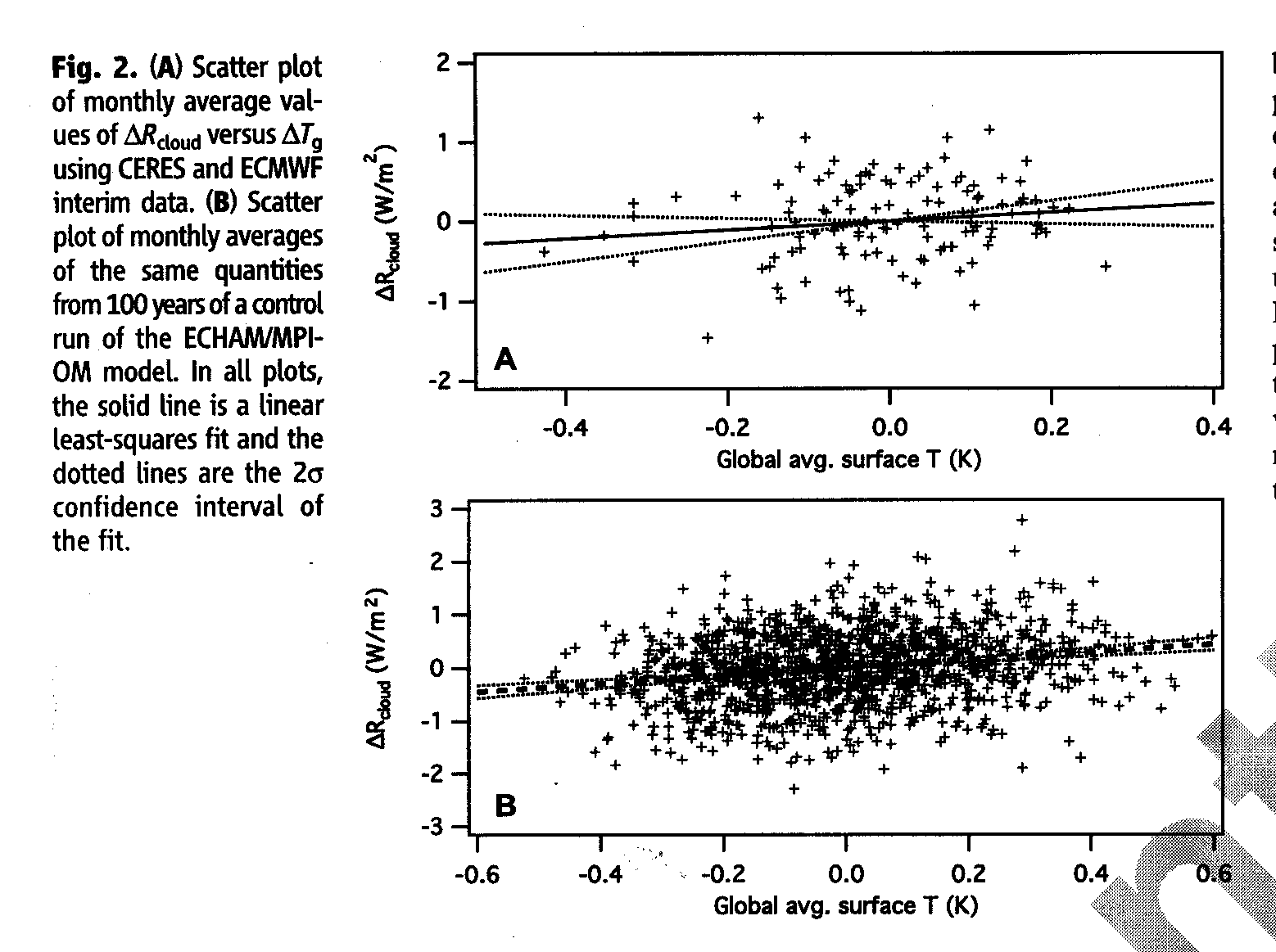The e-mail debate I have been having with Andy Dessler over his recent paper purporting to show positive cloud feedback in 10 years of satellite data appears to have reached an impasse.
Dick Lindzen has chimed in on my side in recent days, but Andy continues to claim that – at least during the 2000-2010 period in question — I have provided no evidence that clouds cause climate variations.
This is remarkably similar to how Kevin Trenberth rebutted my last congressional testimony…”clouds don’t cause climate change”, is approximately what I recall Kevin saying.
So, let’s return to Andy Dessler’s main piece of evidence, which is Fig. 2 from his paper, showing how monthly, global-average changes in (1) clouds and (2) surface temperature relate to each other, in the satellite observations (top panel), and in the ECHAM climate model (bottom panel, click for large version):

Andy has fitted regression lines to the data, and both have a slope approaching zero (for some reason, I can’t even find correlation coefficients in his paper). He claims these regression slopes support positive cloud feedback, in both the satellite observations and the climate model.
Now, why do I (and Dick Lindzen) disagree with this interpretation of the data? Because, while feedback is — by definition — temperature change (the horizontal axis) causing a cloud-induced radiative change (the vertical axis), NO ACCOUNTING HAS BEEN MADE FOR CAUSATION IN THE OPPOSITE DIRECTION.
And as shown most recently by Spencer & Braswell (2010, SB2010), any non-feedback source of cloud variations will (necessarily) cause a temperature response that is highly DE-correlated…just as we see in the satellite data! In fact, we showed that a near-zero regression slope can occur with even strongly NEGATIVE cloud feedback.
The bottom line is that, you can not use simple regression to infer cloud feedbacks from data like those seen in Dessler’s data plots.
This is not a new claim…there have been earlier papers cautioning against inferring cloud feedback (a specific kind of causation) from such data. The first two papers that come to mind are Aries & Rossow (2003 QJRMS), and Stephens (2005 J Climate). Nevertheless, researchers continue to use such statistics to try to justify the claimed reality of continuing climate model projections of strong global warming.
I’m sorry, but finding some statistical relationship with a near-zero correlation in BOTH the satellite data AND in the climate model behavior is (in my opinion) nowhere near proving that climate models are useful for long-term predictions of the climate system.
If that makes me a “denier”, so be it.

 Home/Blog
Home/Blog



